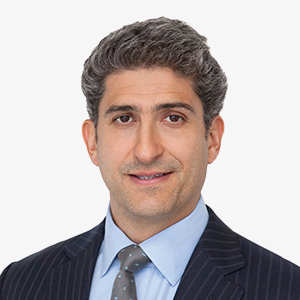Genesis Fund
Mutual Funds | Equities
Genesis Fund
YTD RETURN
0.00%
Why Invest
High-Quality Investment Philosophy
Seeks companies with consistent free cash flow generation, above average profitability, conservative balance sheets, sustainable growth prospects and differentiated business models with durable barriers to entry, that we believe are trading at below-average to average valuations
Unique Risk / Return Profile
Our high-quality focus seeks to mitigate the risks inherent in the small-cap asset class, providing a portfolio with less volatility and potential downside mitigation
Large, Experienced and Dedicated Investment Team
Seasoned professionals averaging 20+ years of experience, with a proven long-term track record; well- resourced to exploit the inefficiencies in the small-cap asset class
Morningstar Rating
For each retail mutual fund with at least a three-year history, Morningstar calculates a Morningstar Rating based on a Morningstar Risk-Adjusted Return measure that accounts for variation in a fund’s monthly performance (including the effects of sales charges, loads, and redemption fees), placing more emphasis on downward variations and rewarding consistent performance. The top 10% of funds in each category receive five stars, the next 22.5% receive four stars, the next 35% receive three stars, the next 22.5% receive two stars and the bottom 10% receive one star. (Each share class is counted as a fraction of one fund within this scale and rated separately, which may cause slight variations in the distribution percentages.) The Overall Morningstar Rating for a retail mutual fund is derived from a weighted average of the performance figures associated with its three-, five- and ten-year (if applicable) Morningstar Rating metrics. Ratings are ©2025 Morningstar, Inc. All Rights Reserved. The information contained herein: (1) is proprietary to Morningstar and/or its content providers; (2) may not be copied or distributed; and (3) is not warranted to be accurate, complete or timely. Neither Morningstar nor its content providers are responsible for any damages or losses arising from any use of this information.
Top 10 Holdings
Portfolio holdings are expressed as a percentage and are calculated by taking the market value of each holding and dividing it by the Fund's NAV. Portfolio holdings and other characteristics are current as of the date shown and are subject to change.
Gross expense represents the total annual operating expenses that shareholders pay (after the effect of fee waivers and/or expense reimbursement, if any). The Fund’s investment manager has contractually undertaken to waive and/or reimburse certain fees and expenses of the Fund so that the total annual operating expenses are capped (excluding interest, brokerage commissions, acquired fund fees and expenses, taxes including any expenses relating to tax reclaims, dividend and interest expenses relating to short sales, and extraordinary expenses, if any;) through 8/31/2028 for Class R6 at 0.75%, for Trust Class at 1.50%, for Institutional Class at 0.85% and for Advisor Class at 1.50% (each as a % of average net assets). As of the Fund’s most recent prospectuses, the Manager was not required to waive or reimburse any expenses pursuant to this arrangement. Absent such arrangements, which cannot be changed without Board approval, the returns may have been lower. Information as of the most recent prospectuses dated December 18, 2024, as amended and supplemented.
All Risk Measures are calculated using the Fund’s Institutional Share Class.
Beta is a measure of market-related risk A beta less than 1 indicates the portfolio is less volatile than the index, while a beta greater than 1 indicates more volatility.
Sharpe Ratio is a measure of the risk adjusted return of a portfolio, calculated by dividing the excess return (portfolio annualized return minus the risk-free rate) by the portfolio standard deviation. A higher Sharpe Ratio indicates better performance.
Standard Deviation measures the volatility of the Fund's and Benchmark's returns. Higher deviation indicates higher volatility and risk.
Up Capture Ratio measures a manager's performance in up markets relative to the market by dividing the manager's return by the market's return during up periods. A value of 110 indicates the manager performs 10% better than the market.
Down Capture Ratio measures a manager's performance in down markets relative to the market by dividing the manager's return by the market's return during down periods. A value of 90 indicates the manager's loss is 100% of the market's loss.
Active Share measures the percentage of mutual fund assets that are invested differently from the benchmark.


